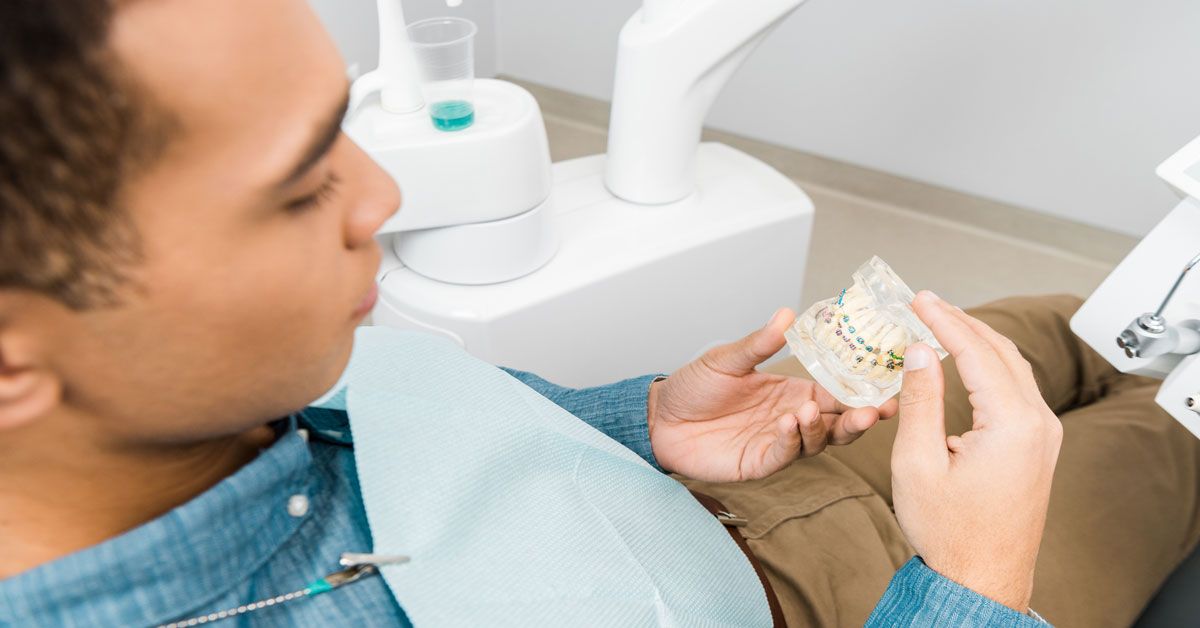
Orthodontics—Specialized Dentistry That Isn’t Just For Kids
When many people hear the word “orthodontics” the first image that usually comes to mind is a kid with braces. But did you know that about 30 percent of all orthodontic patients in the U.S. are adults, and that orthodontics involves more than just straightening crooked teeth? And this begs the further question of: what exactly is orthodontics and how does it differ from dentistry?
The short answer is that orthodontics is a specialized branch of dentistry that focuses on occlusion (bite patterns) and teeth and jaw alignment. Thus, orthodontists are dentists who have received an additional two to three years of education and residency training relating to these specialized dental issues. This allows them to perform various corrective actions to fix malocclusions (bad bites), such as overbites and underbites, eliminate gaps between teeth, correct crowded teeth, straighten teeth, or otherwise fix any problems relating to proper teeth alignment and jaw function.
Orthodontic Tools Used to Improve Teeth and Jaw Function
The goal of orthodontics is to maximize the effectiveness of a patient’s teeth and jaw functions. Ancillary benefits of orthodontics include a better-aligned smile and rejuvenated facial appearance. Among corrective tools used by orthodontists are:
- Braces
- Invisalign
- Retainers
- Other Corrective Appliances
Reasons Why Some Adults Need Orthodontics
While many adults seek orthodontic work for cosmetic smile improvement, adult orthodontic referrals are often made for functional reasons. Teeth can shift at any age, whether by injury or natural growth, and any shift may cause imperfections in occlusion. Even adults who had braces in childhood, may find that they need braces again due to such shifts. Any change in tooth alignment can also increase the risk of localized plaque buildup, or cause irregular wear of tooth enamel. Additionally, adults seeking dental implants may need orthodontic work first, to ensure a proper fit and functional bite with the new implant(s).
Your dental professional may refer you to an orthodontist if they see any occlusion-related irregularities, or upon request for cosmetic reasons. Additionally, some dentists have some level of training in orthodontics, and may be able to take limited corrective actions to address minor occlusion imperfections. Once referred, an orthodontist will perform a clinical assessment to formulate the best treatment plan. This assessment may include:
- Oral, facial and functional evaluation
- Intra-oral and facial photographs
- X-rays of teeth and jaw
- Impressions of teeth and bite patterns for modeling
Most orthodontic treatments, such as braces and other corrective appliances, are utilized over a two-year time period, often followed by follow-up treatment with a retainer. During this time it is important to maintain your regular dental maintenance with daily oral care—such as brushing and flossing—tailored with any orthodontic appliances, and regularly scheduled dental visits and cleaning.
The dental-care experts at Island Tower Dentistry check for occlusion as part of the full scope of dental services provided. The office may be able to take minor corrective actions to better align teeth, and will refer you to an orthodontist if and when needed. With years of experience helping people in the Marco Island Florida area brighten their smiles, Island Tower Dentistry is your first line of defense in the maintenance of dental health. To learn more about what the Island Tower team can do for you, contact us today at 239-394-1004 to make an appointment!